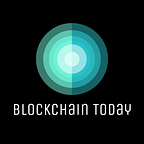Beyond Borders: How RWAs Facilitate Cross-Border Trade in a Digital Economy
In the rapidly evolving digital landscape, cross-border trade has become increasingly crucial for businesses of all sizes. However, traditional payment methods often pose significant challenges, including high fees, lengthy processing times, and complex regulatory hurdles. Enter Real World Assets (RWAs), a groundbreaking solution that promises to revolutionize cross-border transactions, making them faster, more secure, and cost-effective.
What are Real World Assets (RWAs)?
Real World Assets, or RWAs, are digital representations of fiat currencies, commodities, or other assets that are backed by trusted entities and governed by regulatory frameworks. These digital assets are designed to facilitate seamless cross-border transactions while adhering to local regulations and maintaining robust compliance standards.
RWAs leverage blockchain technology and smart contracts to enable secure, transparent, and efficient transfers of value across borders. By bridging the gap between traditional finance and the digital realm, RWAs offer a viable solution to the challenges faced by businesses engaged in international trade.
The Benefits of RWAs for Cross-Border Trade
- Faster and More Efficient Transactions One of the most significant advantages of RWAs is their ability to facilitate near-instantaneous cross-border payments. Unlike traditional wire transfers, which can take days to clear, RWA transactions are processed in real-time on decentralized ledgers, significantly reducing settlement times and improving cash flow for businesses.
- Lower Transaction Costs Cross-border payments often incur high fees due to the involvement of multiple intermediaries, such as correspondent banks and payment processors. RWAs eliminate the need for many of these intermediaries, resulting in lower transaction costs and improved profit margins for businesses engaged in international trade.
- Enhanced Transparency and Traceability The blockchain technology underlying RWAs provides unparalleled transparency and traceability for cross-border transactions. Each transaction is recorded on an immutable distributed ledger, enabling real-time tracking and reducing the risk of fraud or errors.
- Improved Regulatory Compliance RWAs are designed to comply with local regulations and anti-money laundering (AML) standards, ensuring that cross-border transactions adhere to the highest level of compliance. This mitigates the risks associated with regulatory violations and facilitates smoother trade operations across jurisdictions.
- Greater Financial Inclusion By reducing barriers to entry and providing a more accessible cross-border payment solution, RWAs contribute to greater financial inclusion, empowering businesses of all sizes to participate in the global economy more effectively.
Key Players in the RWA Ecosystem
Several prominent players have emerged in the RWA ecosystem, offering innovative solutions to facilitate cross-border trade in the digital economy. Here are a few notable examples:
- JPM Coin (JPMorgan Chase) JPM Coin is a permissioned digital currency issued by JPMorgan Chase, designed to facilitate instantaneous cross-border payments and streamline the settlement process for institutional clients.
- Utility Settlement Coin (USC) (Utility Settlement Coin AG) The Utility Settlement Coin (USC) is a blockchain-based digital currency backed by a consortium of leading financial institutions, including UBS, BNY Mellon, and State Street. It aims to facilitate faster and more efficient settlement of financial transactions, including cross-border payments.
- Tether (Tether Limited) Tether is a widely used stablecoin pegged to the U.S. dollar, providing a bridge between traditional fiat currencies and the digital asset ecosystem. It has gained significant traction in cross-border transactions due to its stability and liquidity.
- Diem (Meta Platforms, Inc.) Diem, formerly known as Libra, is a proposed digital currency project led by Meta Platforms (formerly Facebook). While still in development, Diem aims to facilitate low-cost cross-border payments and promote financial inclusion on a global scale.
The Future of Cross-Border Trade with RWAs
As the world becomes increasingly interconnected and digital, the adoption of RWAs is poised to gain momentum. Central banks and regulatory bodies around the globe are actively exploring the potential of central bank digital currencies (CBDCs) and their implications for cross-border transactions.
Moreover, the integration of RWAs with emerging technologies, such as the Internet of Things (IoT) and artificial intelligence (AI), could further streamline cross-border trade processes. Automated smart contracts and IoT-enabled supply chain tracking could enhance transparency, reduce friction, and optimize logistics for businesses engaged in international trade.
Conclusion
Real World Assets (RWAs) represent a paradigm shift in cross-border trade, offering a secure, efficient, and cost-effective solution for businesses operating in the digital economy. By leveraging blockchain technology and adhering to regulatory standards, RWAs address the shortcomings of traditional payment methods, facilitating faster transactions, enhancing transparency, and promoting financial inclusion on a global scale. As the world continues to embrace digital transformation, the adoption of RWAs is poised to accelerate, paving the way for a more seamless and borderless trade ecosystem.
